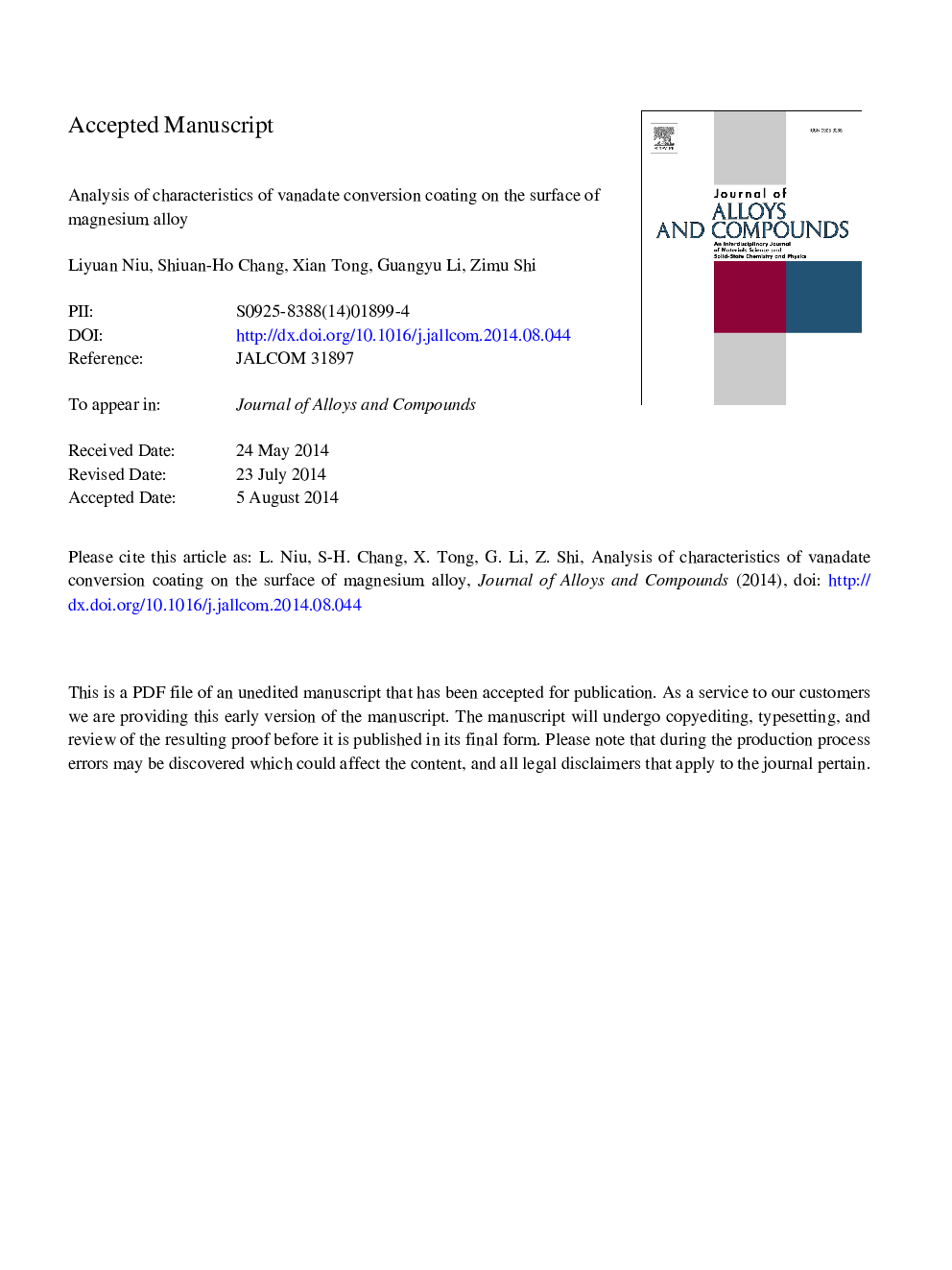| Article ID | Journal | Published Year | Pages | File Type |
|---|---|---|---|---|
| 8000747 | Journal of Alloys and Compounds | 2014 | 20 Pages |
Abstract
The vanadate conversion coating (VCC) was formed on the surface of magnesium (Mg) alloy in vanadium phosphate solution, as well as the cathode electrophoresis and bake-curing treatments of the conversion coating proceeded. According to the addition of vanadate in the solution, the conversion coating is refined crystalline and possesses low weight loss during electrophoresis and bake-curing treatment processes. Besides, when the content of NaVO3 is 4Â g/L in vanadate solution, not only the microstructure of conversion coating is the most refined, but also the adhesion and corrosion resistance of electrophoretic paint coating (EPC) is the best. On the other hand, the “rare earth phosphating VS low-temperature electrophoresis” technique is suitable for Mg alloy coatings. As seen in scanning electron microscope (SEM), the VCC reveals three-dimensional net structure, which provides a well underlayer for the adhesion between electrophoretic paint and the samples.
Related Topics
Physical Sciences and Engineering
Materials Science
Metals and Alloys
Authors
Liyuan Niu, Shiuan-Ho Chang, Xian Tong, Guangyu Li, Zimu Shi,
